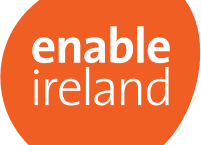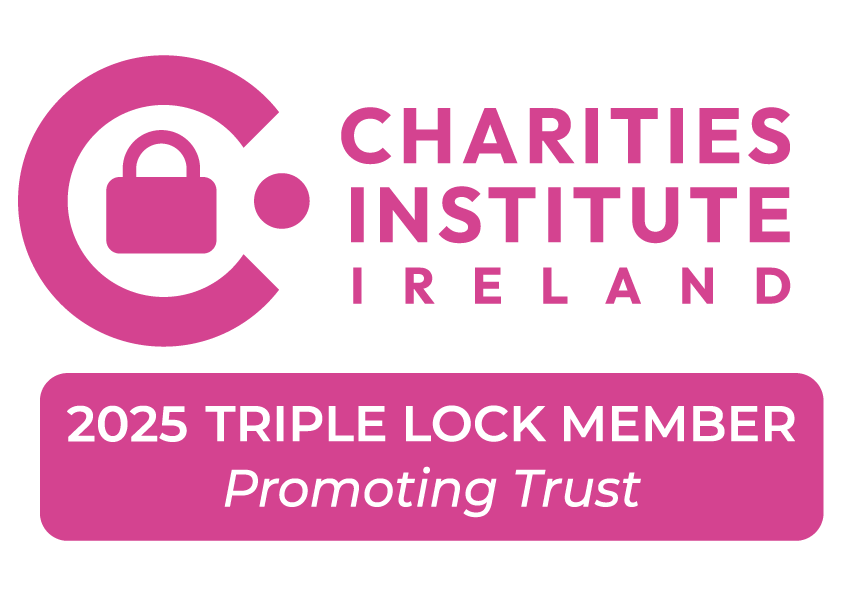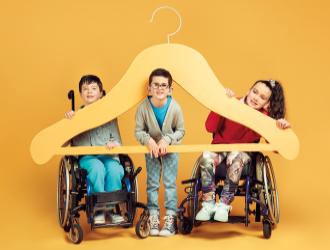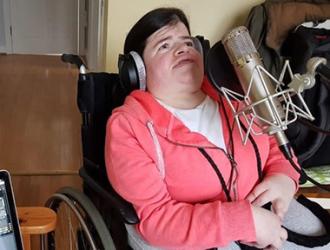A Discussion Paper - 2016
- Our vision for Assistive Technology
- Forward, Disability Federation of Ireland
- Forward, Enable Ireland
- Executive Summary
- Chapter 1. Introduction
- Chapter 2. Why do we need to focus on Assistive Technology?
- Chapter 3. How can Assistive Technology support people in their lives?
- Chapter 4. Recommendations
- Chapter 5. Conclusion
- References
- Appendix 1
- AT Survey Results
- Appendix 2
- AT Survey Questions
- Appendix 3
- UN Convention on the Rights of Persons with Disabilities
- Acknowledgements
- Support people to access their human rights (United Nations Convention on the Rights of Persons with Disabilities)
- Support the State to deal with resource constraints on services and social welfare spend
- Support the State to respond to population increases amongst people with disabilities and older people
- Offer value for money in terms of user satisfaction and increased quality of life and cost savings
- Support people to complete their education
- Support people to get and retain employment
- Support people to live in their community
- Support people to become digitally literate
- Issue a cross-Government Policy Statement that supports people’s right to access Assistive Technology at any age, where there is an identified need
- Introduce an Assistive Technology (AT) Passport
- Assign a central coordinating agency with responsibility to support an ecosystem of supports
- Provide up to date information, advice and peer supports
- Develop funding protocols
- Develop Service Provision
- Invest in capacity raising amongst AT users, professionals and in research and innovation
- Convening a cross-departmental group to consider the AT passport and a supporting infrastructure
- Research to quantify the extent of current Assistive Technology investment across all government departments and disability agencies, and establish the extent of growing demand
- Better resourcing of the Assist Ireland website to expand its capability
- Resourcing CHAT, as a cross-sectoral learning hub that supports multi-stakeholder engagement and learning.
Technological supports can liberate people to communicate with others, to live independently, as well as live and work in their communities. Accessible mainstream technology and Assistive Technology together form the new pen and paper of the 21st century. We now have a unique opportunity to bring the UNCRPD to life using Assistive Technology. This is not an opportunity we as a society can afford to miss.
Back to ContentsChapter 1. Introduction“Assistive Technology is a right not a luxury, it enables me to contribute to the economy and to fulfil my employee role, which has a positive ripple effect on others. Assistive Technology makes the impossible possible.”(Aileen, university administrator and wheelchair user) Technology and society are locked in a two way exchange with technology exerting a huge influence over the ways in which we live. Every aspect of social, political, economic and cultural life is now influenced by technology. This offers a unique opportunity for people with disabilities and older people to participate in Irish society as never before. It supports a human rights agenda and makes sound financial sense. We should build a sustainable ecosystem for accessible technology in Ireland, which empowers everyone to participate. This ecosystem can generate social and economic value to the Assistive Technology user and to society. This paper defines what we mean when we talk about Assistive Technology, and the impact it can have on people’s lives. We introduce the concept of an Assistive Technology (AT) Passport that can place people with disabilities and older people at the centre of articulating and driving their Assistive Technology needs. The AT Passport is a new concept which has the potential to complement current service delivery models. We propose this unique solution along with a supporting infrastructure in order to bring greater coherence and cost effectiveness to Assistive Technology service provision in Ireland. This paper also calls for a whole of government policy statement to support the AT passport and sets out principles that will deliver better and more strategic outcomes for people with disabilities and older people.Back to ContentsWhat is Assistive Technology?
Assistive Technology refers to practical tools that can enable people with disabilities and older people to maximise their independence. Assistive Technology is“any item, piece of equipment or product system whether acquired commercially, modified or customized that is used to increase, maintain or improve functional capabilities of individuals with disabilities” (World Health Organisation & World Bank 2011, p.101). Examples of Assistive Technology include screen reading software that supports people with vision impairment as well as those with literacy challenges, and voice output communication solutions for those who are non-speaking. It also embraces environmental control technologies such as remote control of doors, windows and lights to enable independence in the home. On top of that there is a growing range of mainstream mobile solutions available via apps on smartphones and tablet devices which can support everything from personal navigation to personal organisation and memory aids. This paper makes a distinction between Aids and Appliances, which includes hearing aids and mobility aids and Assistive Technology which refers to electronic devices. We also note a difference between Assistive Technology and technology enabled care services e.g. telehealth, telecare, ehealth and digital health (healthcare at a distance). Many mainstream developments in technology such as smart phones and tablets offer excellent accessibility features. Often these are enough to support a person, but the user may need opportunities to trial different options before buying. As the pace of change is so fast, we should act now to ensure that we support a society that expects all mainstream technology developments (from public services to websites and apps) to be accessible, and that we design services to provide supports to those who need them in a timely and efficient way.“I have a deep set will for independence, and mobile devices have enabled that, so that relatively affordable devices such as my iPhone allow me to live an independent life. I can converse on Skype, I can use email, I can search the internet, I can get real-time bus information to allow me independently travel. I can look up recipes, shop online. I mean, it really does put me on a relatively even playing field.” (Kim, part-time AT consultant with sight loss)Back to ContentsTechnology is all-pervasive and impacts on all aspects of daily life. Where previously, specialist and often expensive AT solutions were required (e.g.: screen reading software for mobile phones), today, many solutions are an integral feature of mainstream devices, available at no extra cost. Emerging trends include:- Mobile devices: Smartphones and tablets have become increasingly accessible and affordable in recent years.
- The growth of a sharing economy and open licensing: There is a growing trend to offer more free content online, much of which is accessible to disabled and older people.
- The growth of remote/online supports: It is now possible to provide remote online technical support, which offers great opportunities to remotely support people to use technology, and can also be used for peer mentoring.
- Wearable technology: Wearable technology can provide alerts and information in more accessible ways. For example an alert could remind someone to take medication or to leave home at a particular time to catch a bus.
- The growth of the Internet of Things and location-based services: The Internet of Things (IoT) describes the networks between physical devices and buildings that allows those objects to collect and exchange data. This can perform tasks such as monitoring what food needs to be reordered online and requesting supermarket deliveries.
- Increasingly Disruptive models of service delivery: The advent of new ways of delivering services, such as AirBnB for accommodation and Hailo for taxis, are based on the concept of a sharing economy, and are revolutionising how we access goods and services. Potential developments of interest might include accessible online accommodation booking services to meet significant shortfalls in respite, residential and holiday accommodation.
Assistive Technology can help address the gap between policy and practice
Assistive Technology offers a unique potential to deliver on many social policies affecting the lives of people with disabilities and older people. These include, amongst others, some high level policy aspirations such as:- United Nations Convention on the Rights of Persons with Disabilities (2015)
- Future Health (2012)
- Healthy Ireland (2013)
- National Disability Inclusion Strategy (2004)
- National Positive Ageing Strategy (2015)
- The Comprehensive Employment Strategy for People with Disabilities (2015)
- The Task Force on Personalised budgets (2016)
- Service delivery is fragmented
- Service delivery is inconsistent
- The level of AT funding is unquantifiable
- Service delivery is not person-centred
- There are no Assistive Technology outcome measures
There is no overarching mechanism in Ireland to assess the effectiveness or efficiency of Assistive Technology solutions currently funded by the State. The exception to this is a report by the National Council for Special Education (2016), which indicates that over 70% of students surveyed said that their educational needs had been met by their Assistive Technology.
- Assistive technology can support people to access their human rights
- Assistive Technology can support us to respond to changing resources
- Assistive Technology can support Ireland to respond to changing demographics
- Assistive Technology represents sound value for money
- Assistive Technology can support people to complete their education
- Assistive Technology can support people to get and retain employment
- Assistive Technology can support people to live in their community
People with disabilities and older people have a growing expectation that they can live in their own homes and be part of the community around them (Costello and Cox, 2013). Time To Move on From Congregated Settings (2011), New Directions (2012) and Progressing Disability Services for Children and Young People (2011) contain significant commitments to moving people from institutions to the community, as well as reconfiguring day services and creating more equitable access to services for children with disabilities, regardless of geography or diagnosis. All of these initiatives will benefit hugely from harnessing the potential of Assistive Technology.
The use of Assistive Technology to promote independence at home can include being able to switch lights on and off, open the front door, or change the channels on the television. These simple freedoms are key to the development and maintenance of independence. A modest capital investment can greatly enhance an individual’s ability to live independently, or with reduced supports. It can also provide the foundation on which participation in education and employment can be built.
Such technologies have the potential to reduce dependence on personal assistants for the basics of daily living, allowing care hours to be utilised for social activities and creating time to address more complex personal issues.
Back to ContentsIndependent Living Case study: A woman, who is a wheelchair user, lives in her own apartment. She uses environmental controls to the value of €18,500. She also has 99 hours of Personal Assistant (PA) supports per week. Without her environmental controls, she would sacrifice significant independence, and would require 168 hours of PA supports weekly (i.e. 24/7 support), at a cost in excess of €59,000 per annum. The total cost of her AT was less than one third of the annual cost of round-the-clock Personal Assistant support.- Assistive Technology can support people become digitally literate
1. Issue a Cross-Government Policy Statement on Assistive Technology
The provision of Assistive Technology needs a whole of government approach. This requires a policy statement developed at ministerial level that supports disabled people’s right of access to Assistive Technology at any age, where there is an identified need. A policy statement could embrace all mainstream and specialist policies designed to support people across education, work and community living. It could address fragmentation and inconsistencies within the current system. A central agency could be mandated with responsibility for ensuring delivery of a comprehensive infrastructure, to include the coordination of the AT Passport process, information provision, and model of service delivery that will serve disabled citizens’ needs for Assistive Technology solutions. We recommend that this process also support innovation and development of Assistive Technology. Principles for guiding such a policy statement are laid out below.Principles Guiding Policy Statement
We have developed the following principles based on international best practice, informed by the work of the European Assistive Technology Information Network (EASTIN) and their update of the HEART Report (1994). In particular, the HEART study highlighted fragmented Assistive Technology provision and despite the advances since then, Steel and de Witte (2011) report of the enduring importance of the Heart study today, as this challenge remains. We recommend that the following principles be used to guide a policy statement.1) Accessibility People with disabilities, long-term illnesses, chronic conditions and older people have a right to access Assistive Technology solutions that support them to live as part of their communities, and participate in education and employment in line with the principles of the UNCRPD.- Access must be granted regardless of health condition or age.
- Access must be consistent regardless of geographical location.
- Access must be consistent regardless of education, work or living circumstances.
- Funding eligibility must be fair and equitable.
- Information and advice on options must be freely available.
- AT users who can self-assess must be supported to do so, and have their assessment validated and processed.
- AT users must be supported to make active choices around solutions that suit their needs.
- Expert AT users must be trained and resourced to peer mentor other users and/or become a resource to industry.
- Consumers must also be offered the option to choose higher spec equipment and contribute to its purchase from their own resources, as well as input into the aesthetic elements of the equipment.
- The model must give autonomy to the user, or support services to instigate reviews at key life transition points, or as a result of changing health needs.
- Investment is required to keep up to date with technological advances and ensuring assessors, staff, and AT users keep pace with latest developments.
- Investment in innovation is also a requirement to ensure that mainstream developments are accessible.
- It must demonstrate value for money across the lifespan of the person using the technology, in a way that accounts for opportunity costs as well as financial costs.
- It must provide a timely response, particularly during key transition points.
- It must have the flexibility to support new AT users, learners and expert users across mainstream solutions and highly complex AT systems.
- It must deliver a service as close as possible to where people live or work.
- It must provide funding according to need, and take account of capacity to pay or contribute for low cost, readily available items.
- Funding resources must also be pooled together to provide better value for money and better outcomes for people with disabilities.
- The best use of existing resources, mainstream supports and services within current systems must be utilised, with specialist supports coming into play on a needs basis only.
- Central procurement of equipment can ensure value for money for commonly used items.
- The ecosystem and model of delivery should be monitored for effectiveness, efficacy and efficiency over time.
2. Introduce an Assistive Technology Passport
Introduce an Assistive Technology Passport that can act as a single resource to support the process of referral, assessment, selection of solution and equipment, authorisation, procurement and implementation of the chosen Assistive Technology solution. It can be issued by the central co-ordinating Assistive Technology agency and can be retained by the person with a disability or older person. It can act as a single resource to the person and all who interact with them around their technology support needs. It can provide a record of their technology use, and the context in which they use it. It can also record the level of funding to which the holder is entitled. We recommend that a cross-departmental group is charged with the task of examining the feasibility of the AT Passport in the immediate term.Back to Contents3. Assign a central coordinating agency with responsibility to support an ecosystem of supports
A central agency needs to have the responsibility for coordinating different aspects of a comprehensive service. These different elements form an ecosystem of supports. The ecosystem includes issuing of AT passports and central procurement functions. The central agency can also work alongside information provision, service provision and training to ensure that services are as up to date and responsive as possible (see Figure 6). It can ensure that services provide better value for money, avoid duplication as well as gaps in service. The coordinating agency can also ensure that research and innovation are directly linked to user need and developments in technology. It can also perform a monitoring and evaluation function for the entire system.4. Provide up-to-date information, advice and peer supports
Potential Assistive Technology users, their family and supporting professionals all need access to information and advice on what is available and how to access it. They need up-to-date, accurate, accessible and impartial information and advice on the range of available technologies and funding options. This requires an impartial website, supported on a statutory basis. In addition to a website and helpline, an online loan library would allow prospective users test technology in advance of purchase. A website is well suited to supporting interactive online forums where people can post queries and seek peer advice and support. It could also support online training and user-led videos and how-to guides. This will safeguard against international trends that indicate that 60% of users abandon their technology due to lack of information, assessment or training (Scherer & Federici, 2015). We already have a sound foundation on which to build such a service. The Citizens Information Board’s Assist Ireland web site is a platform that can be to develop. A greater vision for the potential of this resource to provide a comprehensive information service is one of the priorities we recommend for consideration in the immediate term. The Community Hub for Assistive Technology (CHAT), a national network of AT users, AT service providers, researchers and innovators, could also act as a model for information exchange and shared learning.[1]Back to Contents5. Develop funding protocols
The issue of funding needs to be addressed across three domains: firstly eligibility criteria must be established to respond to both the person's financial means and complexity of Assistive Technology solution. Provision must also be made for central procurement of commonly used items of equipment, and protocols for sourcing off the self as well as bespoke solutions.- Suggested protocols for individual eligibility protocols
- Central Procurement
6. Service Provision
In developing a model for service provision, we considered many international models, and experiences in other countries including the UK, Australia and the US. This model is largely informed by the European Assistive Technology Information Network (EASTIN), and in particular, on their updating of the HEART Report (1994) which lays out seven steps to service delivery. A service delivery model for Assistive Technology must be flexible to account for different trajectories. For example, to create an efficient system, it may be desirable to skip some steps where existing need has been established, or where people can effectively self-assess. A person should also be able to trial several Assistive Technology options from an AT loan library before the right solution is identified.7. Capacity Building, Research and Innovation
Technology is developing rapidly and its future potential is unknown. An effective service must keep apace with these changes as well as resource people with disabilities and older people to articulate their needs and ensure they are embraced at the design and development stage for all technological advancements. Professionals, academics and innovators must all be supported to ensure they consider how to make future innovations accessible. The following recommendations are made in response to this necessity.- Capacity Building amongst AT users
- Capacity Building amongst Professionals
- Promoting Research and Innovation
- Hackett., Amsterdamska O., Lynch M., Wajcman J., (eds.) (2007) Handbook of Science and Technology Studies. MIT: Cambridge
AT Survey Questions
1. I use these assistive technologies:
- Screenreader or text to speech
- Magnification
- Alternative to a standard keyboard or mouse
- Voice recognition
- Communication Aid
- Hearing Aid
- Video Captions
- Switch
- On Screen keyboard
- Eye Tracking system
- Other (please specify)
2. How much approximately did your assistive technology cost?
- Less than €200
- €201 to €1000
- €1001 to €3800
- More than €3800
3. How satisfied are you with your Assistive Technology?
- I can't manage without my Assistive Technology
- My technology is useful
- I do not use my technology on a regular basis
4. Where did you get your technology from?
- School
- University
- HSE
- Other Service Provider
- Employment Services
- Self-funded
5. How long did it take you to get your technology from your first request?
- less than one month
- one to three months
- three to six months
- sim months to a year
- More than a year
6. How did you feel about the process of obtaining your technology?
- Very pleased - it was quick and straightforward.
- OK - I considered it reasonable.
- Frustrated and disappointed due to delays or process
7. Did you get the training you required to enable you to use your AT effectively?
- Yes
- No
- No training required
8. If your answer to question 7 was "No" please tell us how much training you think you needed - otherwise leave this question blank
9. How would you describe your disability?
- I have little or no sight
- I need content made larger as my sight is poor
- I have little or no hearing
- I need sounds amplified to allow me to hear them
- I have very limited control over my body
- I find walking and moving difficult or impossible
- My use of my hands and arms is difficult, painful or limited
- I find reading text difficult or impossible
- I need support to read traditional books
- I have problems with memory or personal organisation
- Other (please specify)
10. Is there anything else you’d like to share which might increase our understanding of your experience as an AT user?
Back to ContentsAppendix 3- UN Convention on the Rights of Persons with DisabilitiesAssistive Technology: Article 4.1: General Obligations, Article 20b, d: Personal Obligations, Article 27(3): Habitation and Rehabilitation, Article 29a (11): Participation in Public and Political life, Article 32 1. d: International Cooperation.
- Accessibility: Article 3 f: General Principles, Article 4.1 h: General Obligations, Article 9: Accessibility,
- Universal Design: Article 2: Definition, Article 4.1 f: General obligations
- People with disabilities have the right to live in the community as equal citizens, covered in Article 19 of the UN CRPD.
- Article 27 (1), States Parties recognize the right of persons with disabilities to work, on an equal basis with others; this includes the right to the opportunity to gain a living by work freely chosen or accepted in a labour market and work environment that is open, inclusive and accessible to persons with disabilities.




